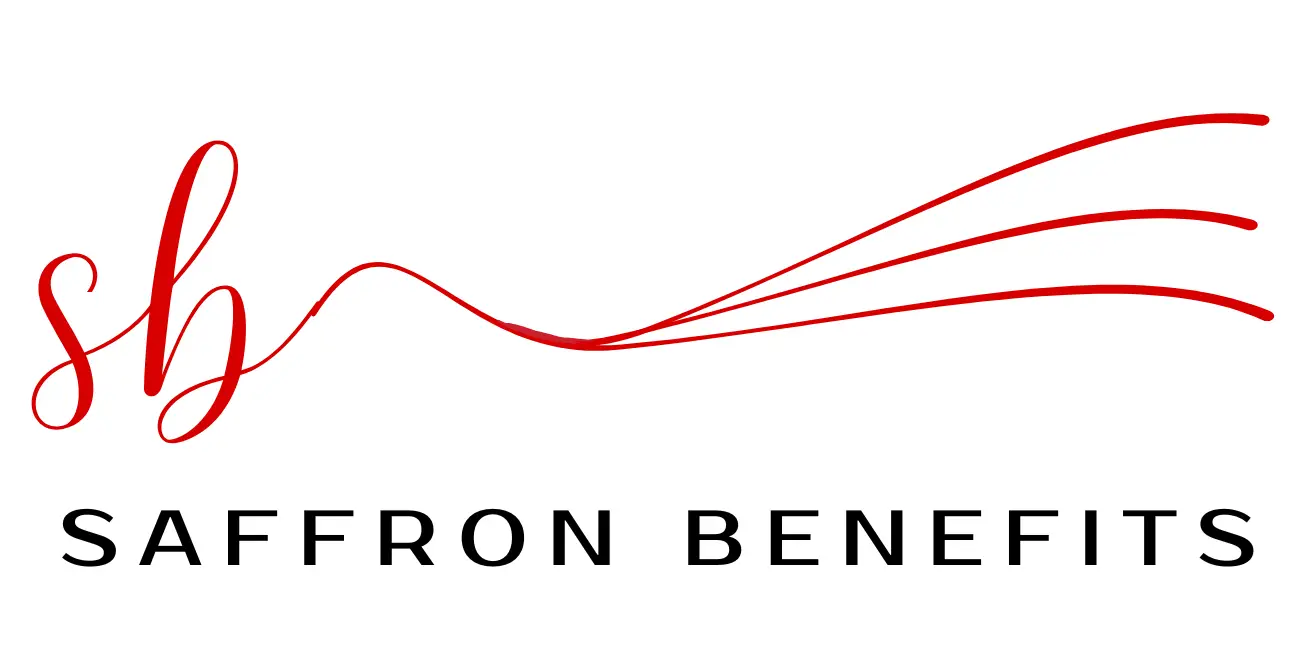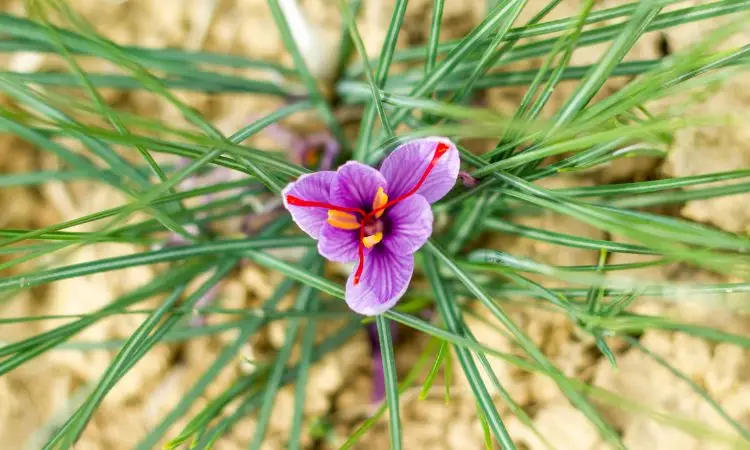📌 Quick Answer: Saffron coloring strength is measured by crocin content using ISO 3632 standards, with Grade I requiring 200+ crocin units. Professional testing uses HPLC and spectrophotometry, while home assessment involves visual inspection (deep red threads), water tests (golden color release), and proper storage in dark, cool conditions to maintain potency.
Saffron, the world’s most expensive spice by weight, derives its premium value largely from its extraordinary coloring strength – the ability to impart rich, golden hues that have captivated civilizations for over 3,000 years. Understanding saffron’s coloring properties is essential for producers, traders, chefs, and consumers seeking to evaluate quality, ensure authenticity, and maximize culinary applications.
The distinctive coloring strength results from specific carotenoid compounds that develop through precise cultivation, harvesting, and processing methods. These compounds not only create visual appeal but also correlate with flavor intensity and therapeutic properties, making color assessment a reliable indicator of overall saffron quality.
Chef’s Professional Tip: In professional kitchens, we evaluate saffron coloring strength by adding a pinch to warm water – premium saffron releases deep golden color within minutes while maintaining thread integrity, indicating high crocin content and optimal culinary performance.
Key Coloring Strength Assessment Factors
- Crocin Content: Primary pigment measured in units (200+ for Grade I saffron)
- Color Release Pattern: Quality saffron provides steady, rich golden coloration
- Visual Characteristics: Deep red threads with minimal yellow or white portions
- Laboratory Standards: ISO 3632 protocols ensure consistent quality measurement
- Storage Impact: Proper preservation maintains coloring potency for years
- Regional Variations: Different origins show distinct coloring strength profiles
The Science Behind Saffron’s Distinctive Color Properties
Understanding the chemical foundation of saffron’s coloring strength provides insight into quality assessment, storage requirements, and culinary applications.
Chemical Composition of Saffron Pigments
Saffron’s remarkable coloring properties result from a complex family of carotenoid compounds, with crocin serving as the primary pigment responsible for the characteristic golden-red hue.
Crocin Compounds: The crocin family includes multiple related compounds (crocin-1, crocin-2, crocin-3, and crocin-4) that collectively create saffron’s coloring strength. These water-soluble carotenoids are unique to saffron, making them reliable markers for authenticity and quality assessment.
Chemical Structure: Crocins are glycosyl esters of crocetin, a dicarboxylic acid that forms the chromophore (color-producing part) of the molecule. The number and position of sugar groups attached to crocetin determine the specific crocin type and its color intensity.
Concentration Variables: High-quality saffron typically contains 200-400 mg of crocin per 100g of dried saffron, with premium grades showing higher concentrations that directly correlate with coloring strength and market value.
Antioxidant Properties and Color Correlation
The carotenoid compounds responsible for saffron’s color also provide significant antioxidant activity, creating a direct relationship between coloring strength and therapeutic potential.
Antioxidant Mechanisms: Crocin compounds neutralize free radicals through their conjugated double-bond structure, with higher concentrations providing greater antioxidant activity alongside enhanced coloring strength.
Stability Factors: The same chemical structures that create color are susceptible to degradation from light, heat, and oxygen exposure, explaining why proper storage is crucial for maintaining both coloring strength and therapeutic properties.
Quality Correlation: Saffron with superior coloring strength typically demonstrates higher antioxidant activity, making color assessment a practical indicator of overall therapeutic value.
Food Scientist’s Note: Crocin’s water solubility makes saffron unique among carotenoids – unlike fat-soluble carotenoids in other spices, crocin releases easily into aqueous solutions, explaining saffron’s effectiveness in both water and oil-based culinary applications.
Natural Color Development Process
The development of saffron’s coloring compounds occurs through specific biochemical processes during flower maturation and post-harvest processing.
Biosynthesis Pathway: Crocin compounds develop from zeaxanthin through enzymatic processes that occur during stigma maturation, with optimal development requiring specific temperature and moisture conditions.
Harvest Timing Impact: The concentration of coloring compounds peaks during specific flower maturity stages, making precise harvest timing crucial for maximum coloring strength.
Processing Effects: Traditional drying methods can enhance crocin concentration through enzymatic reactions, while improper processing can reduce coloring strength through compound degradation.
Evolution of Saffron Quality Standards Through History
The historical development of saffron quality assessment reveals how coloring strength became the primary quality indicator across different cultures and trading systems.
Ancient Quality Assessment Methods
Historical records from Persia, Greece, and Egypt describe sophisticated color-based quality evaluation systems that recognized the relationship between visual appearance and culinary performance.
Persian Grading Systems: Ancient Persian texts describe saffron grades based on color intensity, using terms that translate to “fire-red” for the highest quality and “pale-gold” for lower grades.
Mediterranean Standards: Greek and Roman merchants developed color comparison methods using reference samples, establishing trade standards that prioritized visual consistency and coloring strength.
Cultural Integration: Traditional medicine systems incorporated color assessment into therapeutic evaluation, recognizing that deeper colors indicated higher potency for medicinal applications.
Modern Standardization Development
Contemporary quality standards evolved from traditional practices while incorporating scientific measurement methods that provide objective coloring strength assessment.
International Organization: ISO 3632 standards, established in 1993 and revised in 2011, provide globally recognized protocols for measuring saffron coloring strength through crocin content determination.
Regional Adaptations: Different producing regions developed complementary standards that reflect local characteristics while maintaining compatibility with international frameworks.
Industry Evolution: Modern standards accommodate both traditional quality indicators and scientific measurement methods, ensuring cultural continuity while enabling objective quality verification.
Key Factors Affecting Saffron Coloring Strength
Multiple interconnected factors influence the development and preservation of saffron’s coloring compounds, affecting final product quality and market value.
Growing Conditions and Environmental Factors
Environmental conditions during cultivation significantly impact crocin development and final coloring strength.
Climate Requirements: Optimal crocin development requires specific temperature patterns: cool, moist winters (0-10°C) for bulb development, followed by warm, dry summers (25-30°C) for flower formation. Temperature extremes during flowering reduce crocin synthesis.
Soil Composition: Well-draining, slightly alkaline soils (pH 7.0-7.5) with high organic matter content support optimal crocin production. Poor drainage or extreme pH levels can reduce coloring strength by affecting nutrient uptake and plant metabolism.
Water Management: Precise irrigation timing affects crocin concentration – adequate moisture during growth phases followed by dry conditions before flowering maximizes pigment development while preventing dilution.
Altitude Effects: High-altitude cultivation (1,500-2,000 meters) often produces saffron with superior coloring strength due to intense solar radiation and temperature variations that stimulate crocin synthesis.
Harvest Timing and Processing Impact
Post-harvest factors significantly influence final coloring strength through their effects on crocin preservation and concentration.
Optimal Harvest Windows: Crocin concentration peaks when flowers are partially open, typically during early morning hours. Harvesting too early or too late can reduce coloring strength by 20-30%.
Processing Speed: Rapid processing within 2-4 hours of harvesting prevents enzymatic degradation that reduces crocin content. Delayed processing can result in significant coloring strength losses.
Drying Methods: Traditional drying at 35-45°C preserves crocin while removing moisture. Higher temperatures (>60°C) can degrade coloring compounds, while insufficient drying promotes mold growth that destroys pigments.
Handling Practices: Gentle handling prevents physical damage that can release cell contents and expose crocins to oxidation. Rough handling can reduce coloring strength through mechanical and chemical degradation.
Age and Environmental Storage Factors
Storage conditions and time significantly affect saffron’s coloring strength through their impact on crocin stability.
Light Exposure: Ultraviolet light rapidly degrades crocin compounds, with direct sunlight reducing coloring strength by 30-50% within weeks. Dark storage is essential for long-term preservation.
Temperature Effects: Elevated temperatures accelerate crocin degradation, with storage above 25°C causing measurable coloring strength reduction within months. Optimal storage temperatures range from 10-20°C.
Moisture Impact: Excess moisture (>12% relative humidity) promotes enzymatic reactions that degrade crocins while encouraging mold growth. Proper moisture control maintains coloring strength for extended periods.
Oxygen Exposure: Contact with air causes oxidative degradation of crocin compounds. Airtight storage significantly extends coloring strength preservation compared to open storage.
Professional Laboratory Testing Methods
Advanced analytical techniques provide precise measurement of saffron coloring strength for quality control, authentication, and commercial grading purposes.
High-Performance Liquid Chromatography (HPLC)
HPLC represents the gold standard for measuring saffron coloring strength through precise quantification of individual crocin compounds.
Methodology: HPLC separates and quantifies crocin-1, crocin-2, and other related compounds using specialized columns and detection systems. This method provides detailed compositional analysis that reveals both total coloring strength and quality indicators.
Advantages:
- Precise measurement of individual crocin compounds
- Detection of adulterants and quality variations
- Quantitative results suitable for regulatory compliance
- Reproducible protocols enabling quality comparisons
Applications: Professional laboratories use HPLC for grade certification, batch quality control, research applications, and dispute resolution in commercial transactions.
UV-Vis Spectrophotometry
Spectrophotometric analysis provides rapid, cost-effective measurement of saffron coloring strength through light absorption measurement.
Measurement Principle: Crocin compounds absorb light at specific wavelengths (typically 440nm), with absorption intensity directly correlating to concentration and coloring strength.
Standard Protocols: ISO 3632 specifies spectrophotometric methods for measuring crocin content, with results expressed in absorption units that correspond to coloring strength grades.
Practical Benefits:
- Fast results (minutes rather than hours)
- Lower cost than HPLC analysis
- Suitable for routine quality control
- Equipment is readily available in many laboratories
Colorimetric Assessment Methods
Advanced colorimetric instruments provide objective measurement of saffron’s visual characteristics that correlate with coloring strength.
Instrumental Analysis: Digital colorimeters measure color parameters (Lab* values) that quantify color intensity, hue, and saturation, providing objective alternatives to subjective visual assessment.
Correlation Studies: Research demonstrates strong correlations between instrumental color measurements and crocin content, enabling rapid quality assessment without chemical analysis.
Industry Standards and Grading Systems
International standards provide frameworks for consistent quality assessment and commercial grading based on coloring strength measurements.
ISO 3632 International Standards
The International Organization for Standardization established comprehensive protocols for saffron quality assessment based primarily on coloring strength measurement.
Grade Classifications:
- Grade I: Crocin content ≥ 200 absorption units
- Grade II: Crocin content 170-199 absorption units
- Grade III: Crocin content 110-169 absorption units
- Grade IV: Crocin content < 110 absorption units
Testing Protocols: ISO standards specify sample preparation methods, extraction procedures, and measurement techniques that ensure consistent results across different laboratories and regions.
Commercial Applications: These standards enable fair trade practices, quality verification, and consumer protection by providing objective criteria for saffron evaluation.
Regional Quality Systems
Different producing regions have developed complementary grading systems that incorporate local characteristics while maintaining compatibility with international standards.
Spanish Classification: Spanish saffron uses additional categories (Coupe, Mancha, Rio) that consider thread appearance alongside coloring strength, reflecting traditional Spanish quality concepts.
Iranian Standards: Iran employs grading systems (Negin, Sargol, Pushal) that consider both coloring strength and physical characteristics, accommodating different processing methods and market segments.
Indian Categories: Kashmir saffron classification emphasizes coloring strength alongside traditional quality indicators, supporting the region’s premium market positioning.
Consumer Guide to Assessing Saffron Coloring Strength
Practical methods enable consumers to evaluate saffron coloring strength without laboratory equipment while making informed purchasing decisions.
Visual Inspection Techniques
Careful visual examination provides valuable insights into saffron coloring strength and overall quality.
Thread Color Assessment: Premium saffron displays deep, uniform red coloration throughout individual threads, with minimal yellow or white portions. Faded, pale, or inconsistent coloration indicates reduced coloring strength.
Color Distribution: Quality saffron shows consistent color across different threads in a sample, while inferior products may display significant color variation, indicating mixed grades or processing problems.
Thread Structure: High coloring strength saffron typically maintains good structural integrity with trumpet-shaped stigma ends, indicating careful handling and processing that preserves pigment compounds.
Simple Home Testing Methods
Basic tests help consumers evaluate coloring strength using common household items.
Water Test Protocol: Place 0.1g saffron in 100 mL of warm water and observe color development. Premium saffron produces a rich golden color within 5-10 minutes, while inferior products show weak or artificial coloration.
Color Release Pattern: Quality saffron releases color gradually and steadily, creating rich golden hues that intensify over 15-20 minutes. Poor quality saffron may release color too quickly (artificial dyes) or too slowly (low crocin content).
Thread Behavior: Authentic high-coloring-strength saffron maintains thread structure during water testing while releasing pigments. Threads that dissolve completely or show no color release indicate quality problems.
Product Label Evaluation
Understanding label information helps consumers identify quality indicators and make informed purchasing decisions.
Origin Information: Labels indicating specific growing regions (Kashmir, La Mancha, Khorasan) often correlate with superior coloring strength due to optimal growing conditions and traditional processing methods.
Grade Designations: Products labeled Grade I, Coupe, or Negin typically offer superior coloring strength compared to lower grades, though prices should reflect these quality differences.
Certification Marks: Quality certifications (ISO, PDO, organic) indicate testing and verification processes that often include coloring strength assessment, providing additional quality assurance.
Packaging Considerations: Dark, airtight packaging protects coloring compounds from degradation, while clear packaging may indicate exposure that reduces coloring strength over time.
Storage Methods for Maintaining Coloring Strength
Proper storage techniques preserve saffron’s coloring compounds and maintain quality over extended periods.
Optimal Storage Conditions
Temperature Control: Store saffron at stable temperatures between 10-20°C to minimize crocin degradation. Avoid temperature fluctuations that accelerate compound breakdown and reduce coloring strength.
Light Protection: Dark storage prevents photodegradation of crocin compounds. Opaque containers or dark storage areas maintain coloring strength significantly better than light-exposed storage.
Moisture Management: Maintain relative humidity below 50% to prevent mold growth while avoiding excessive dryness that can cause brittleness. Optimal moisture content (10-12%) preserves coloring compounds while maintaining handling characteristics.
Air Exposure Minimization: Airtight containers prevent oxidative degradation of crocin compounds. Vacuum packaging or inert gas storage provides maximum protection for long-term preservation.
Quality Monitoring During Storage
Regular Assessment: Periodic color evaluation helps identify storage problems before significant quality loss occurs. Compare stored saffron against fresh samples to monitor degradation.
Visual Changes: Color fading, browning, or loss of vibrancy indicates storage problems affecting coloring strength. Address storage issues immediately when visual changes appear.
Performance Testing: Regular water tests help monitor coloring strength changes over time, enabling storage optimization and quality maintenance decisions.
Understanding Premium vs Regular Coloring Strength Differences
Quality tiers reflect coloring strength variations that affect both culinary performance and economic value.
Premium Grade Characteristics
Superior Coloring Performance: Premium saffron (Grade I) provides maximum coloring strength with minimal quantity requirements, offering better value despite higher unit costs.
Consistency Advantages: High-grade saffron delivers predictable coloring results, enabling precise recipe development and consistent culinary outcomes.
Efficiency Benefits: Superior coloring strength means smaller quantities achieve desired color intensity, potentially offsetting higher purchase prices through reduced usage requirements.
Standard Grade Applications
Cost-Effective Options: Lower-grade saffron provides authentic coloring at reduced costs, suitable for applications where maximum intensity isn’t required.
Volume Applications: Standard grades work well for large-scale food production where cost control is essential and slight color variations are acceptable.
Learning Opportunities: Beginning cooks can learn saffron usage with standard grades before investing in premium products for special applications.
Purchasing Considerations and Quality Verification
Smart purchasing strategies ensure optimal coloring strength while avoiding counterfeit or degraded products.
Vendor Assessment
Quality Documentation: Reputable saffron suppliers provide coloring strength specifications, test results, and quality certifications that verify product characteristics.
Storage Practices: Professional vendors maintain optimal storage conditions and guide preservation methods that maintain coloring strength after purchase.
Sample Availability: Quality suppliers offer samples enabling coloring strength evaluation before larger purchases, demonstrating confidence in their products.
Authentication Methods
Laboratory Verification: For valuable purchases, laboratory testing confirms coloring strength and authenticity, protecting against fraud and ensuring quality expectations.
Authenticity Testing: Home testing methods help identify genuine saffron with appropriate coloring strength while detecting common adulterants and counterfeits.
Comparative Analysis: Maintain reference samples of known quality to enable comparison testing and quality verification of new purchases.
Culinary Applications and Coloring Strength Optimization
Understanding how coloring strength affects cooking performance enables optimal utilization and recipe development.
Usage Guidelines
Quantity Calculations: Higher coloring strength saffron requires smaller quantities to achieve desired color intensity, with Grade I saffron typically needing 25-30% less than Grade III for equivalent results.
Extraction Methods: Proper extraction techniques maximize coloring strength utilization – soaking saffron in warm liquid for 10-15 minutes before use ensures optimal color release and distribution.
Timing Considerations: Add saffron early in cooking processes for maximum color development, but avoid excessive heat that can degrade coloring compounds.
Understanding saffron coloring strength enables informed purchasing decisions, proper storage practices, and optimal culinary applications. Whether evaluating quality through professional testing or simple home methods, coloring strength assessment remains the most reliable indicator of saffron quality and value.
Frequently Asked Questions
How is saffron coloring strength measured professionally? Professional measurement uses ISO 3632 standards with HPLC or UV-Vis spectrophotometry to quantify crocin content. Grade I saffron requires 200+ absorption units, Grade II needs 170-199 units, and Grade III requires 110-169 units for classification.
What causes variations in saffron coloring strength? Coloring strength varies due to growing conditions (climate, soil, altitude), harvest timing, processing methods, storage conditions, and age. Optimal conditions during cultivation and proper post-harvest handling maximize crocin development and preservation.
How can I test saffron coloring strength at home? Place 0.1g saffron in 100 mL of warm water and observe color development. Quality saffron produces a rich golden color within 5-10 minutes while maintaining thread structure. Weak or artificial coloration indicates poor quality or counterfeiting.
Does higher coloring strength mean better saffron quality? Generally, yes – higher coloring strength correlates with better overall quality, more intense flavor, and greater therapeutic value. However, consider origin, processing methods, and intended use when evaluating saffron beyond coloring strength alone.
How should I store saffron to maintain coloring strength? Store in airtight, opaque containers at 10-20°C with low humidity (below 50%). Avoid light, heat, moisture, and air exposure that degrade crocin compounds. Properly stored saffron maintains coloring strength for 2-3 years.
Why does saffron coloring strength affect price? Higher coloring strength requires fewer quantities to achieve desired culinary results, offers superior visual appeal, and indicates careful cultivation and processing. These factors justify premium pricing for high-coloring-strength saffron despite higher unit costs.



